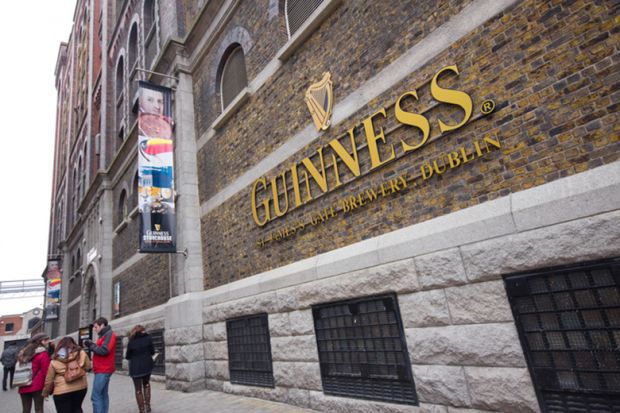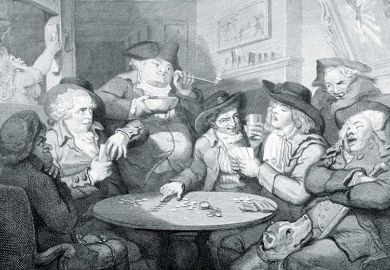At the close of this engrossing and humane book, Tim Strangleman proposes that the “legacy of Guinness at Park Royal is to remind us that we are able to imagine something different, new, and better for the world of work”. And then – with an echo of John Lennon’s cheesy utopianism – he adds, “Can you imagine?” The problem is that word “new”, for Strangleman’s condemnation of the gig economy and the emergence of workplace precarity leads him to, if not an idealisation of, at least a wistful pining for the idea of industrial citizenry. One thinks of the capitalist paternalism of Lever Brothers’ Port Sunlight or Cadbury’s Bournville (neither of which, surprisingly, is mentioned here).
Pointing out a pitfall doesn’t always prevent one tumbling in and, despite his cautions against “smokestack nostalgia”, the Guinness factory becomes, for Strangleman, the site of an Edenic “pastoral capitalism” in which “an organic conservatism…emphasised slow, considered change, rather than radical, sudden upheaval”.
Symptomatic of the long boom (the three decades following the end of the Second World War), Guinness’ success demonstrated an occupational buoyancy which allowed employees, we read, to feel “comfortable in their skins…there was a general sense of being ambitious to achieve one’s human potential”. With its daily beer allowance, on-the-job training (the Boys’ Scheme), two amateur theatre troupes, in-house magazine, landscaped gardens and playing fields, together with a relaxed and progressive attitude towards trade unions, the “philosophy of work was underpinned by an unparalleled sense of optimism and a faith in coordinated collective effort”.
Giles Gilbert Scott’s vast secular temple was finished in 1936. Its majestic scale epitomised a collaborative effort to the service of which a vast variety of trades contributed, including drivers, maintenance crews, gardeners, brewers, coopers, coppersmiths, scaffolders, accountants, managers and mechanics (all delivered in-house). But everything changed in the 1980s and 1990s with the rise of the service sector, deregulation and the creation of large conglomerates which were in a position to threaten Guinness with greater competition. Unfortunately, this coincided with a rise in demand for “lighter, continental lager” and a dramatic decline in UK alcohol consumption: beer sales in pubs dropped by more than 50 per cent between 1989 and 2009. The development of automation and the subcontracting-out of marginal trades reduced Guinness’ workforce from more than 1,500 to just eighty.
October 1981 saw the arrival of Ernest Saunders, who rapidly set about asset stripping, selling off 140 of Guinness’ 300 subsidiaries, and ended up with a five-year jail sentence for insider trading. He also took on and enfeebled the unions, so that redundancies were an inevitable outcome. Strangleman implies that, for all the historical pretexts that Guinness came up with for concentrating its operations back in Dublin, the value of the London site was not an irrelevance. In 2006, in the teeth of fierce objections from the Twentieth Century Society and English Heritage, Scott’s building was demolished.
Strangleman’s parting shot is that the decline of traditional trades that conferred identity on to working-class people, writ large in the waning of the Guinness factory, is a contributory factor towards Brexit. What will happen to the price of a pint of Dublin’s ebony nectar once the UK leaves the European Union is anybody’s guess…My goodness, my Guinness!
Peter J. Smith is reader in Renaissance literature at Nottingham Trent University. The paperback edition of his Much Ado About Nothing: Arden Early Modern Drama Guide (co-edited with Deborah Cartmell) was published in August 2019.
Voices of Guinness: An Oral History of the Park Royal Brewery
By Tim Strangleman
Oxford University Press
208pp, £22.99
ISBN 9780190645090
Published 8 August 2019
POSTSCRIPT:
Print headline: Guinness factory book of records
Register to continue
Why register?
- Registration is free and only takes a moment
- Once registered, you can read 3 articles a month
- Sign up for our newsletter
Subscribe
Or subscribe for unlimited access to:
- Unlimited access to news, views, insights & reviews
- Digital editions
- Digital access to THE’s university and college rankings analysis
Already registered or a current subscriber?







